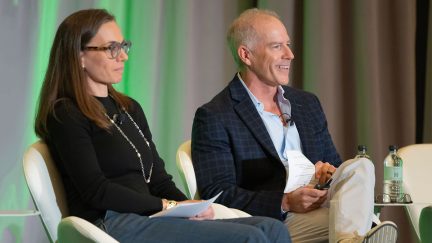Want the latest retirement plan adviser news and insights? Sign up for PLANADVISER newsletters.
Pensionmark CEO on World Insurance Acquisition Mechanics
Last week, World Insurance Associates LLC entered into an agreement to acquire Pensionmark Financial Group, the large national network of retirement and financial planning registered investment advisers.
Industry experts say the deal shows the pace of retirement plan adviser industry mergers and acquisitions shows no signs of slowing down this year, despite some emerging economic headwind.
According to the announcement from World, Pensionmark currently supports more than $80 billion in assets across its adviser network. The comprehensive transaction includes Pensionmark’s Advisor Support Platform, the Pensionmark Financial Group registered investment adviser and the Pensionmark Securities broker/dealer. The Pensionmark entities consist of more than 300 retirement plan specialists, financial advisers and staff.
This week, PLANADVISER spoke with Pensionmark CEO Troy Hammond about details of the deal and the impact it will have on Pensionmark and its advisers.
According to Hammond, about two years ago, Pensionmark advisers took notice of the M&A transactions happening in the broader industry. They began to wonder what they could do internally to replicate what was happening in the marketplace—while still keeping the things that make Pensionmark special.
“We dug in pretty deep and started thinking about ways that we could offer a transaction opportunity for our advisers, where they could become owners in the larger entity while we aligned with a strategic partner that would help us grow collectively, faster and better,” Hammond explains.
As time passed, Hammond says, he noticed most of his firms’ main competitors had sold into a larger entity, leaving Pensionmark as one of the last independents. This meant other firms had found a way to bring more opportunities to their advisers and staff.
“Working together with World Insurance, we created a very unique transaction structure, which we think is a huge differentiator,” Hammond says. “The goal is to allow our advisers to maintain ownership of their business but also become owners of the bigger entity. The deal checked all the boxes for our advisers.”
Compared with some other national firms, Hammond suggests, Pensionmark has younger, faster-growing advisers. This fact had to be considered in the decision to join World Insurance, he says.
“Our organic growth rates are extremely high for our industry, and we wanted to create a model that didn’t put the brakes on that,” Hammond says. “After meeting with several great firms, we felt World was the company that was most in line, philosophically, and that they were willing to invest in the organic growth of Pensionmark’s adviser network.”
Choosing the right firm was not an easy decision, Hammond says. There was a lot of interest in the marketplace to add a financial services platform.
“It was a very, very tough decision, because we just had so many great firms that wanted to partner with us, but World really stood out from the rest,” Hammond says. “And as we got to the final part of the process, every day it became clearer and clearer and clearer that they were the right choice.”
Hammond says that, while many of the other firms checked of several of the boxes they were looking for, World checked them all, “including ones we didn’t know they needed and only learned after about going through the process.”
“It’s a huge milestone for us. We have not been an acquiring firm in the past. We have drawn advisers to our platform because of the strength of our platform. We have a great centralized model that we think is very unique in the industry and a differentiator for us. It has attracted a lot of wonderful advisers to our platform,” Hammond says. “Now we are moving to Pensionmark 2.0, if you will, where we have this great strategic partner, and the ability to acquire firms, or have firms participate in our revenue acquisition model.”
Pensionmark will have more capital to invest in its platform to make it better, Hammond adds, which will attract more talent.
“World takes a comprehensive and collaborative approach to how they serve their clients, and this will allow us to bring the best in every business vertical to our clients,” Hammond says.
As the deal moves forward, Hammond expects the integration process to be “quick and seamless,” because Pensionmark will largely stay the same, retaining the same management and organizational structure and platform, and the same brand. While advisers will begin to see some benefits immediately, he expects that it will take some time before all of the different business verticals are fully integrated.
Hammond says there has been very positive response among those in the industry, and from people inside the firm. Now, he says, he is looking forward to addressing the challenges and opportunities coming out of the deal.
“It going to be about managing growth, hiring the right people and enhancing our technology fast enough to ensure that we are properly servicing our advisers and their clients,” Hammond says. “That is probably one of the things we are best at, so I’m not concerned about it at all. If you don’t manage that growth right, there are problems that can be created that are hard to fix. I know that there is a very tight labor market out there, but we have been very fortunate finding people. There is just a lot of people that want to work for us and we’ve been hiring—particularly over the last six months—in anticipation of this growth.”
Because of the unique transaction structure, Hammond expects that interest among advisers in the Pensionmark platform is going to be magnified, presenting a huge opportunity to add advisers to their network to cross-sell and grow within the World Organization.
“That’s going to be good for everybody here. All of our existing advisers, all of the World advisers, all of the shareholders and all of our clients are going to benefit from that,” Hammond says.
You Might Also Like:

Rethinking Opportunities for RIA Growth

Wealthspire Combines 5 Businesses Under Single Platform

Lincoln International Acquires MarshBerry
« The Biggest Retirement Plan Leakage Triggers and Costs for Participants